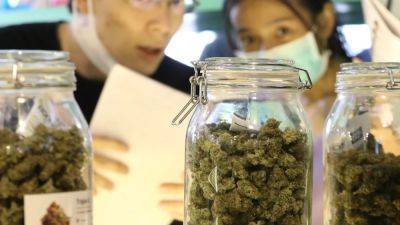Southeast Asia’s brutal heatwave: daily life and agriculture endangered by rising temperatures
While the Bangkokians who can afford it huddle into malls to avoid the blistering sun, and tourists from Phi Phi to Pattaya lament water shortages spoiling their holidays, it is Thailand’s millions of farmers who are most acutely exposed to the climate crisis.
On his farm in Udon Thani, northeastern Thailand, Charawut says his pigs are suffering.
“I’ve been raising pigs for four years now and this year has been brutal,” Charawut, who rears pigs in Udon Thani in northeastern Thailand, told This Week in Asia.
“It’s the hottest year and my pigs have gone nuts. They are stressed and fight each other all the time. They don’t eat and they often get diarrhoea.”
That brings with it rising costs for medicine, vitamins and vets’ fees – all of which threatens to put smallholders like Charawut out of business.
“I have to get a fan with mist to keep them cool,” he added.
This year, El Niño – a naturally occurring weather phenomenon characterised by the warming of ocean surface temperatures in the central and eastern tropical Pacific Ocean – has led to record temperatures across Asia ahead of the monsoon season.
In many parts of Thailand, the thermometer has for weeks oscillated around 40 degrees Celsius and above, making farm work impossibly hard, withering valuable Durian plantations, spoiling some of the sugar crop and pushing the price of eggs higher as chickens and ducks are unable to lay.
The heat is so intense that chickens have died on farms – with one farmer in Chanthaburi, eastern Thailand, posting graphic videos of 12,000 dead poultry being scooped up for incineration after they died without fans to cool them.
Three dozen districts across Thailand recorded their highest temperatures ever in April, according to the Thai







